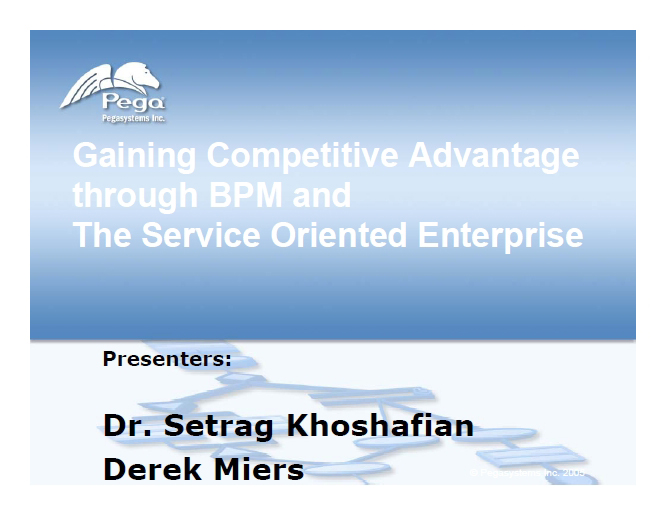The Service Oriented Enterprise is a new approach in business. Each party or participant in service orientation sees themselves as a service provider and consumer, in an increasingly well connected global economy. This is not new: businesses have been serving their clientele since time immemorial. But service orientation is different in two essential ways. First, culturally organizations are realizing the best productivity could be achieved if they focus on serving the needs of their customers but also their employees, trading partners, shareholders, government, and communities.
The Service Oriented Enterprise is a new approach in business. Each party or participant in service orientation sees themselves as a service provider and consumer, in an increasingly well connected global economy. This is not new: businesses have been serving their clientele since time immemorial. But service orientation is different in two essential ways. First, culturally organizations are realizing the best productivity could be achieved if they focus on serving the needs of their customers but also their employees, trading partners, shareholders, government, and communities. The second change is the emergence of service orientation as a new enabling technological trend. Leveraging a service-oriented architecture enables organizations to gain competitive advantage by driving new revenue growth and identifying areas for cost reduction.
Building upon the success of the Internet and a better understanding of how business policies and processes could be automated, we see the emergence of robust service oriented platforms. These platforms are reflected in three layers: an enterprise performance layer, a business process management layer, and the underlying service-oriented architecture infrastructure. BPM is at the core of the SOE architecture.
This presentation will cover the salient features of Service Oriented Enterprises and expand upon the emerging three layered architecture of SOEs.
Bios

Dr. Setrag Khoshafian, Pegasystems, Vice President of BPM Technology
Dr. Setrag Khoshafian is one of the earliest pioneers and recognized experts in Business Process Management. Currently he is Vice President of BPM Technology at Pegasystems, Inc. He is the strategic BPM technology direction and thought leader at Pega. He has been a senior executive for the past 15 years. He designed and led the implementation of the earliest Web centric distributed (CORBA) BPM system. In addition to BPM he has done extensive research and implementation in advanced Database Management Systems. He also let the architecture, design, and implementation of one of the earliest distributed object-oriented database implementations. He is the lead author of eight books and has numerous publications in business as well as technical periodicals. He has given seminars and presentations in conferences, to technical and business communities. He has taught graduate and undergraduate courses in several universities around the world – where he provides his students a unique combination of academic depth combined with industry experience. Setrag holds a PhD in Computer Science from the University of Wisconsin – Madison.

Derek Miers, President, Enix Consulting
Derek Miers is a well known independent industry analyst and technology strategist, publishing a great many white papers and product assessments. Over the years, he has carried out a wide range of consulting roles including running hundreds of training courses (in business and process modeling techniques), undertaking detailed technology selection ssessments and project risk assessment studies. Other engagements have involved the provision of strategic consulting advice – from facilitating board level conversations around BPM initiatives, through establishing effective BPM Project and Expertise Centers, to helping clients develop new business models that leverage business process strategies. Clients have included many of the world’s largest and well-known financial services companies (banks, building societies and insurers), pharmaceutical companies, telecoms providers, commercial businesses, product vendors and governmental organizations.

















